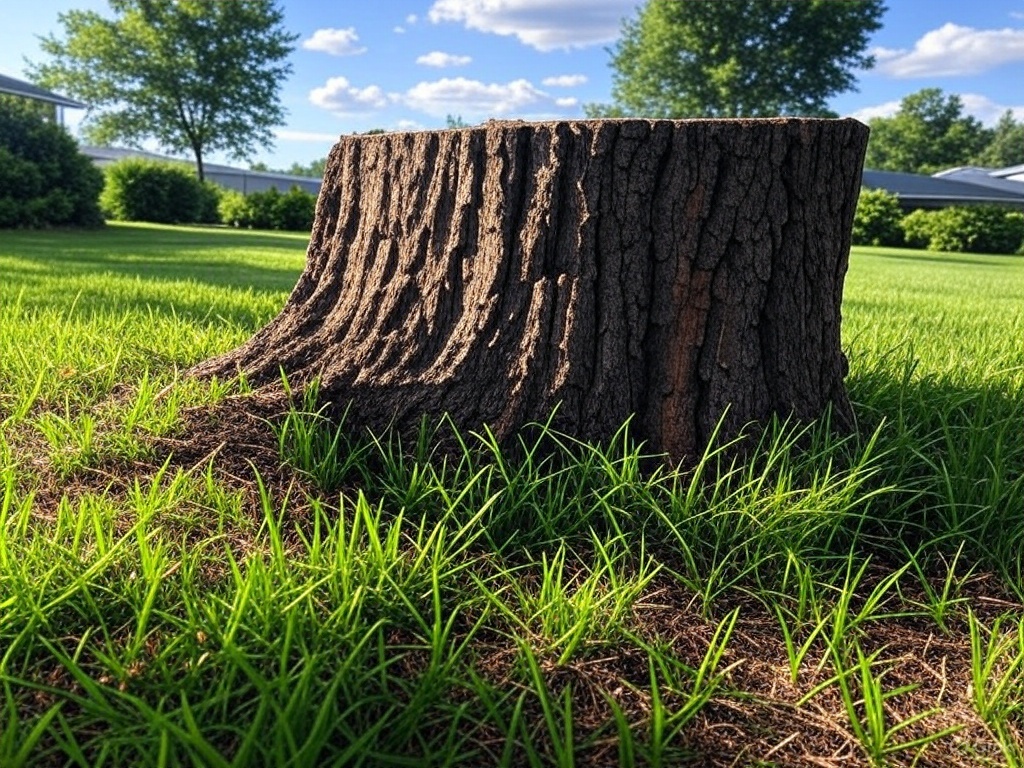Tree Removal Cost Calculator: Add Tree Type / Size
This tree removal cost calculator to get an accurate estimate for removing trees or stumps. This calculator considers tree size, type, condition, location, and additional services.
Tree Removal Cost Calculator
Tree #1
Additional Services
How To Use the Calculator
This tree removal calculator uses industry-standard pricing factors to generate accurate estimates based on the specific characteristics of each tree on a property. The calculator takes into account many variables professional arborists consider when pricing a job.
Understanding the Inputs
- Tree Size (Height): Larger trees require more labor, equipment, and time to remove. This all translates into a higher price.
- Tree Type: Different species have varying wood densities and structural characteristics that affect removal complexity and safety requirements.
- Tree Condition: Dead, dying, or leaning trees present additional safety considerations.
- Location/Accessibility: Trees that are difficult to access or near structures require more time and specialized equipment.
- Additional Services: Options like stump removal, grinding, debris cleanup, and emergency services add to the total cost.
Tree Type Impact on Removal Costs
Tree species significantly affect removal costs due to differences in wood density, branch structure, and overall size. Here's how various tree types influence pricing:
| Tree Type | Price Adjustment | Reason |
|---|---|---|
| Oak | +20% | Dense wood and large branches increase cutting, lifting, and hauling effort. |
| Maple | +10% | Complex branch system and moderate wood density require additional time. |
| Pine | +10% (if over 60 feet) | Lightweight wood offsets challenges; height can complicate removal near homes if over 60 feet. |
| Sycamore | +25% | Extremely heavy wood, sprawling roots, and large branches require more equipment and labor. |
| Elm | +20% | Branch density and resistance to cutting tools add time and complexity. |

Tree Size and Cost Correlation
The height and diameter of a tree are primary factors in determining removal costs. Larger trees require more labor, heavier equipment, and present greater safety challenges:
- Small trees (up to 30 feet): $500 - $700
- Medium trees (30–60 feet): $700 - $900
- Large trees (over 60 feet): $900 - $3,000
Extremely large trees (over 100 feet) or those with complex removal requirements can cost significantly more, sometimes exceeding $5,000 for removal.
Factors That Affect Tree Removal Costs
Location and Accessibility
Trees that are difficult to access or positioned near structures require specialized equipment and techniques:
- Easy access (open area): Standard pricing
- Medium access (some obstacles): +10% cost increase
- Difficult access (near structures/power lines): +20% cost increase
Tree Condition
The health and structural integrity of a tree affects removal safety and complexity:
- Healthy trees: Standard pricing
- Dead or dying trees: +5% (more brittle and unpredictable)
- Leaning or hazardous trees: +10% (require additional safety measures)
Stump Removal
Tree removal typically doesn't include stump removal. Consider these additional costs:
- Stump grinding: $100 - $200 per stump
- Complete stump removal: $150 - $500 per stump
- Root removal: Additional $50 - $350 depending on extent
When to Hire a Professional vs. DIY
Ever looked at a tree in your yard and thought, "I could totally take that down myself"? Before you grab a chainsaw and YouTube some tutorials, there are some real considerations to weigh.
Why the Pros Are Worth It:
- They bring commercial-grade equipment that you'd never want to buy for one job.
- They carry insurance that protects your property (and your neighbor's) if something goes wrong.
- They'll haul away all the debris. No renting a truck or making 8 trips to the dump.
- They know which permits you need and how to get them quickly.
- They can spot dangers you might miss (like internal rot or widow-maker branches).
- They have techniques to control exactly where the tree falls.
DIY Dangers to Consider:
- Chainsaw injuries send about 36,000 people to the ER annually per the CDC.
- Trees rarely fall exactly where you want them to (goodbye, garage?).
- You might hit underground utilities or overhead power lines.
- What starts as a weekend project can turn into weeks of headaches.
- Your homeowner's insurance probably won't cover DIY mishaps.
- Neighbors can sue if your tree damages their property.
Hiring pros costs more money. But most arborists agree: if your tree is taller than 20 feet, near any structures, tangled in power lines, or showing signs of disease, the professional route is money well spent.
When's the Best Time to Remove a Tree?
Here's what you should know about seasonal differences:
Winter & Late Fall
Best for: Lower prices and easier cleanup
- Tree services are less busy (often 10-20% cheaper).
- No leaves means lighter work and better visibility.
- Frozen ground supports heavy equipment with less lawn damage.
- Dormant plants around the tree are less likely to be damaged too.
Spring & Summer
Best for: Disease identification and emergency removal
- Easier to spot diseased trees when they should be leafing out.
- Better weather for the crew (but expect to pay peak prices).
- Immediate removal if storm damage occurs.
- Faster stump grinding when the ground isn't frozen.
Emergency tree removal after storms or when a tree is threatening your home usually costs a 25-50% premium regardless of season. If you notice a tree is damaged or dying, don't wait for it to become an emergency.
- Winter: Often less expensive as it's the off-season for many tree services. Frozen ground can also make equipment access easier in some areas.
- Spring: Busy season begins, with prices trending upward as demand increases.
- Summer: Peak season with highest demand and often higher prices.
- Fall: Still busy but gradually decreasing as winter approaches.
Emergency tree removal (after storms or for hazardous situations) almost always command a 25-50% premium regardless of season.
Permits and Regulations
Many municipalities require permits for tree removal, especially for trees above a certain size (often 10+ inches in diameter). Other reasons could include protected or heritage tree species conversation areas, wetlands, or public areas.
Permit costs typically range from $25 to $100 but can be higher in some areas. Professional tree services usually handle permit applications as part of their service.
This tool offers a solid starting estimate, but remember that a professional on-site assessment will provide the most accurate pricing for your specific situation and location.
